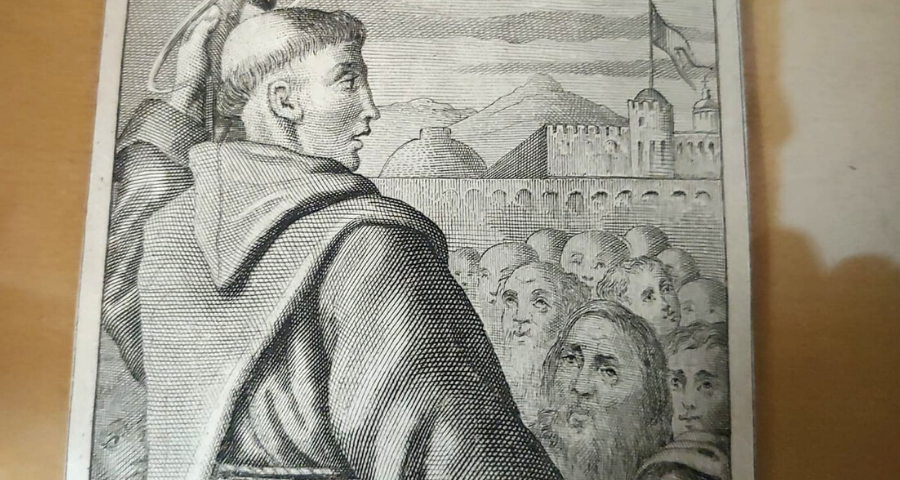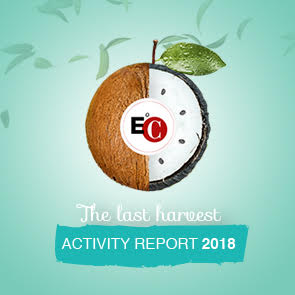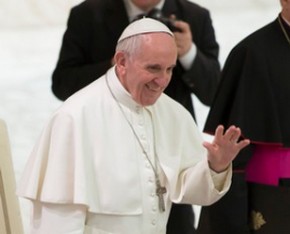The Market and the Temple/7 - Analysis. The different medieval conceptions, the debate that arose and the question that is arising today (not only) in Europe.
By Luigino Bruni
Published on Avvenire 20/12/20
If we want to understand how economic ethics developed through medieval Christianity and then in capitalism, we should try to inhabit its radical ambivalence, starting from the first Christian theology.
If we want to understand how economic ethics developed through medieval Christianity and then in capitalism, we should try to inhabit its radical ambivalence. Early Christian theology made extensive use of economic-commercial lexicon and metaphors to try to explain the Christian event, the incarnation and salvation. Starting from the very word oikonomia, which became fundamental in the first theological-philosophical mediation of Christianity: the economy of salvation, the economic Trinity. Jesus defines money (mammon) as his rival god, but Jesus himself is presented to us as a "divine merchant", whose blood had been the "price" of salvation, a redemption "paid" by the sacrifice of the cross. The whole Middle Ages, then, were a proliferation of economic-theological words: from "lucrative" souls to "earning" heaven or purgatory; up to the tradition, very dear to Augustine (Sermon 9) of man as the "coin of God", because it bears his effigy/image. One of the phrases often repeated by tradition, but not by the Gospels, neither canonical nor apocryphal, the so-called agrapha of Jesus, quoted by Clement of Alexandria, contains an important concept: «Scripture rightly urges us to be competent money changers, disapproving of some things, but being firm on what is good» (Stromateis 1,28,177, end of the 2nd century). Hence the tradition of the Christus monetarius, the "good money changer", because he is capable of distinguishing between good and bad "coins".
With all this rich complexity in terms of coins and economics, it is not surprising to find ambivalence and moral uncertainty in the Middle Ages regarding the proper use of money and the economy in general. A premise. To understand the birth of European economic ethics we must never forget that while theologians argued about coins and loans, merchants all the while existed and had to work. Merchants always were and are pragmatic men, so pragmatic as to approach cynicism: money is needed, money changers are needed (there were many kinds of coin in circulation), bankers are needed. Everyone knew that these operators did not work for free, it was expensive to use their services, and the price to pay was called "interest", which was accepted as long as it was not excessive. Real merchants would never have called a mortgage (or a letter of exchange, or a contract of commendation) at an annual rate of 5%, but not even at 10%, a "usurer". They were well aware that there were good and bad bankers, as there was good and bad money, and that bad money and bankers only served to drive out the good ones. They operated and lived among these good and bad things, the ambivalence of life lived in the economy as well.
At that time, the presence of professionals with knowledge of coins and currency was very important for the stability of trade and therefore for the common good. Everyone knew this, as everyone knew that when the cities lacked official money changers/bankers who were periodically checked by the Municipality on their weights, scales, books and measures, the city was instead filled with clandestine stalls of bad lenders and "touts", which often ended up in bankruptcy. The expression in fact derives from the counter on which the money changer placed his coins, the silver table: when he could no longer pay his debts, his creditors came and broke the bank. Between the fourteenth and fifteenth centuries Venice had more than a hundred banks, both Christians and Jews, Florence seventy, Naples forty, Palermo fourteen (Vito Cusumano, "History of the banks of Sicily"/"Storia dei banchi della Sicilia"). The banker was also a money changer, and not infrequently his office was the same as that of the notary. Bankers were in many ways equated with public officials, effectively sharing some aspects of their status, privileges and burdens. No respectable person could think of calling these public bankers "usurers," even if they were lending at interest. Everyone knew that bankers profited from money, first of all the bishops and popes, who on the one hand were the main customers of the banks and on the other hand made homilies and wrote texts condemning the interest loan based on the Bible and the Gospels.
The Church knew all this very well, the Church itself was an expert in various forms of ambivalence, including economic ones. It knew the great bankers well, because they were almost always linked to the great bourgeois and aristocratic families, and sat on the city councils. However, we must not think that the Church, in its various components, was unanimous in matters of money, trade, interest and usury. The Church back then was a plural and antagonistic reality, both in theology and in matters of civil practice, even more than it is in modern times. We should therefore not be surprised by the large number of books and homilies dedicated, especially between the 12th and 17th centuries, to financial and commercial issues. After theology, the subject that was most dealt with by theologians between the Middle Ages and Modernity, was economics. The monastic world still had a great influence in these debates, ancient, rich and powerful as it was. The ora et labora of monasteries and abbeys had created its own economic ethics, very attentive to the values of work and earthly things. In particular, the monks were the great enemies of the capital vice of sloth, that is, of inactivity and laziness; consequently the first praise for the solicitude of the merchant, seen as the anti-sloth par excellence, was born in the monasteries, where the exegesis of the "parable of the talents" was also developed as praise of the undertaking of the first two servants and condemnation of the laziness of the third. The merchant was well liked because he put wealth into circulation, while the miser merely locked it up in his coffers.
The specific reflection on money, however, developed above all among the new mendicant orders, attentive observers, for their charisms, of city civilization. In this context, the birth of the public debts of the commercial cities, in particular Venice and Florence, played an important role in the theological reflection on the interest loan. A debate that involved some great theologians in Venice in the mid-fourteenth century is especially interesting in this regard, it centred on the lawfulness of paying interest on the public debt and selling those debt securities (at a price of about 60-70% of their value nominal). From the end of the twelfth century, the Italian trading cities found themselves faced with a sharp increase in public spending, also due to military spending. Those cities were in fact family consortia, a kind of cooperative society, where the citizens were also members and owners of a common good: the city. In the early stages, public expenditure was covered with various forms of contributions and taxes from citizens. However, faced with the explosion in public spending, citizens thought that instead of continuing to raise their taxes it might be more convenient to issue public debt securities. These securities had to pay periodic interest (the payment of interest was called pay) to creditors, at the rate of 5% per annum (the same percentage as the contemporary Monte di Firenze). That public debt was seen by citizens as a mutual advantage over taxes: unlike taxes, public debt paid periodic interest and the city covered its public expenses.
It is interesting to note that while theologians discussed and generally condemned the interest on private loans, so much so that a Papal bull was needed (in 1515) to make the interest, as always 5%, requested by the Franciscan Monti di Pietà legitimate, everyone instead remained very serene about the payment of interest on the public debt. The theological debate in Venice, in fact, did not focus on the lawfulness of the interest accepted as a fact, but on the reason that led to consider that interest lawful. The protagonists of the dispute were the Franciscan Francesco da Empoli, the Dominicans Pietro Strozzi and Domenico Pantaleoni, and the Augustinian Gregorio da Rimini. The Franciscan accepted the interest on the basis of the Franciscan theory of "emerging damage" and "loss of profit": if a citizen had to lend money to the city (sometimes the loans were forced), the city had to compensate for the damage suffered with the payment of interest (term used by Francesco). There was no need for anything else, interest was a price. Furthermore, the Franciscan very consistently did not question the legitimacy of selling debt securities either.
On the other hand, the discourse of the Dominican theologians was a bit more articulated. They were generally more critical than the Franciscans regarding the issue of interests. In the wake of Thomas Aquinas, the two Dominican theologians radically changed their argument and built their thesis on the lawfulness of interest on an entirely different basis: that interest should not be understood as a price for the money lent, but as a gift for those who acted out of civic love: «The Dominican does not dispute the lawfulness of the attribution of a 5% per year to the creditors of the Monte, but proposes an interpretation of it as a spontaneous gift, by the community, which thus expresses its gratitude to the citizen» (Roberto Lambertini, "The medieval debate on the consolidation of the public debt of municipalities"/"Il dibattito medievale sul consolidamento del debito pubblico dei Comuni", 2009). Interest which, consistently with its etymology (inter-esse), was intended as the link in a relationship of reciprocity between gifts. Nevertheless, if that 5% is a gift, then, unlike Francesco da Empoli, for the Dominicans the holder of the title cannot resell it, because gifts are not sold.
This is also where a decisive element comes into play, taken up and strengthened by the Augustinian Gregorio da Rimini: rightful intention. What makes that 5% lawful is the intention with which the city pays it and the citizen receives it. If the intention, of one or both parties, is private profit, then that interest is illegal; if it is the common good, it is lawful. Hence the non-admissibility of trading in securities, precisely because the aim in those who sell and buy is no longer the original common good, but only private profit. Finally, the explanation that Gregory gives to affirm that the city of Venice did not have the right intention in issuing those debt securities is interesting. For the Augustinian theologian, it is the payment of the same percentage of 5% to all, hence without taking into account the different subjective conditions of the lenders, their wealth and needs, which renders that public debt illicit, as if to say that the lack of differentiation highlights the intention for profit and not for the common good. It is the ancient idea that substantial equality, therefore justice, does not coincide with formal equality.
Today we are once again in a founding phase, at a European level, regarding the sense of debts, loans, taxes and interest. Those early ethical debates still have many important things to tell us. They tell us that intentions matter, they still matter in economics. European countries have accepted the issuance of a lot of public debt in this pandemic time because they interpreted the intentions of those who asked and who granted the loans. A common evil - the Covid-19 pandemic - has led to the rediscovery of the common good, and thereby a different kind of interest, the necessary link between debt and the common good. In this terrible 2020, we have also rediscovered the gift, the gifts made and those received, from the gift of life of doctors and nurses to the gift of a free and universal vaccine. What if this were also the beginning of a new economy?








